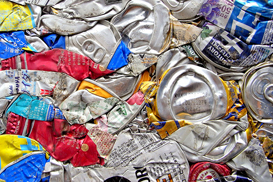Aluminum Smelting Inspires Hot New Battery
 Old and new technologies often bump into each other as we head into a new energy era, and a new liquid battery system under development at MIT provides an interesting example of that dynamic. The new battery was inspired by the process of aluminum smelting, which was developed in the early years of the 19th century.
Old and new technologies often bump into each other as we head into a new energy era, and a new liquid battery system under development at MIT provides an interesting example of that dynamic. The new battery was inspired by the process of aluminum smelting, which was developed in the early years of the 19th century.Energy storage for a new energy future
The energy storage problem isn’t a new one (ever wake up freezing when your campfire goes out overnight?), but it’s especially bedeviling when the energy source is an intermittent one, namely solar power or wind power. When used in mobile devices or electric vehicles, other make-or-break factors come into play including size, durability, weight and efficiency, so it’s pretty evident that new breakthrough technology is required.
The aluminum inspiration
As explained by MIT’s David Chandler the new liquid battery was inspired by the electrochemistry of aluminum smelting. The process takes place at extremely high temperatures, which would seem to be counter-intuitive as far as batteries go (exploding laptops, anyone?), but the smelting industry’s long history demonstrates that the process can be conducted safely, on a large scale.
The liquid battery solution
According to lead researcher Donald Sadoway, the liquid battery system could operate at almost 1,300 degrees Fahrenheit. So far the research team has found promise in a battery consisting of three relatively common, inexpensive materials that naturally separate into three distinct layers in a liquid state: magnesium, a salt mixture, and antimony.
Large-scale solutions for solar and wind storage
The next step is scaling up the system to a useful size, with the ultimate goal of using it for utility-grade energy storage. That might take a while — the research team started with a battery the size of a shot glass. Reducing the
operating temperature is another goal along the way and there are other kinks to be worked out, including hitting a price point that makes the new battery competitive with other large-scale energy storage systems such as pumped hydro or molten salt.
Old material, new solutions
Though much of the excitement in new energy tech is over exotic materials and new chemical (and biochemical) processes, it’s worth nothing that a workhorse material like aluminum still has a significant role to play, especially in terms of getting the cost of renewable energy down to parity with fossil fuels.
You can return to the main Market News page, or press the Back button on your browser.

